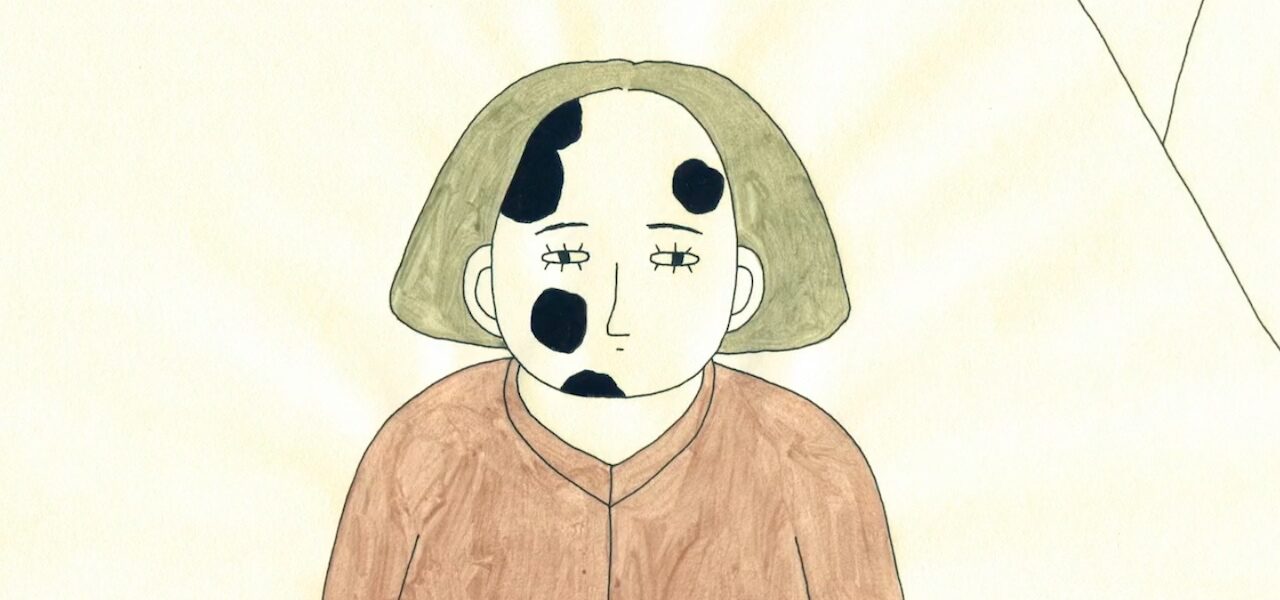
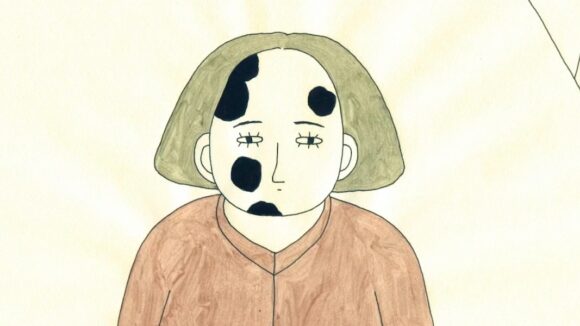
“The Feeling Of Despair Is The Foundation Of My Creation”: A Conversation With Sarina Nihei
Some time ago, I got into a conversation with a friend about animated horror. What filmmakers, we wondered, know how to inspire genuine dread through their animation? One name came quickly to my mind: Sarina Nihei.
Five years have passed since Nihei’s graduation film Small People with Hats tore through the festival circuit, winning the grand prize at Ottawa International Animation Festival among other awards, and still it haunts me. With its razor-sharp editing, foreboding sound design, and bizarro story — about a community of small people who get routinely whacked as part of a conspiracy — the film was pitched somewhere between a Lynchian nightmare and an absurdist satire from Estonia’s Joonisfilm animation studio.
Nihei has carried this style through to her subsequent shorts: first Rabbit’s Blood and now Polka-Dot Boy, which premieres this week at the Ottawa International Animation Festival. The film plunges us into a new conspiracy, this one centered around a cult that appears to fetishize people with polka-dot blotches on their skin. I don’t want to spoil it — even if I did, I’m not sure I could — but suffice to say that Polka-Dot Boy is as diabolically fun as the director’s last films.
Although Nihei is Japanese and based in her home country, her creative affinities lie elsewhere. Her macabre humor puts me in mind of certain British and Estonian filmmakers — especially Priit Pärn, the freakish figurehead of Estonian animation. Nihei made Small People with Hats at the U.K.’s Royal College of Art and Rabbit’s Blood was also produced in the country. There’s something peculiarly British about the bleak suburb of Polka-Dot Boy, but the producers this time are France’s Miyu Productions.
“The feeling of despair is the foundation of my creation,” Nihei tells me frankly. So what does it take to make a film out of despair? Ahead of the premiere of Polka-Dot Boy, we put some questions to her…
Cartoon Brew: Polka-Dot Boy contains elements familiar from your last films: cults, codes, murder, small people. When did you first hit on the idea for this film — did it grow out of the creative process on an earlier production?
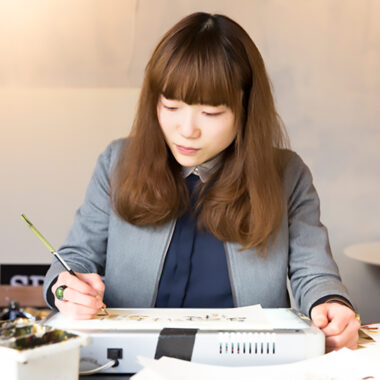
Sarina Nihei: I think the first idea came from drawing in my sketchbook, where I drew a character with polka-dotted skin. At the time, I wanted to make a film about someone who’s suffering from a particular disease, so I guess that’s how it came about.
Regarding the similar elements in my films, I can’t help thinking about dark things when it comes to filmmaking. One of them is extreme beliefs in cults, which I’m always intrigued by and upset about. Also the feeling of despair is the foundation of my creation, which is why it always ends up having similar elements I think.
While all your films convey a sense of unease with society, here that theme is more explicit. You reference grim events from current affairs, including a terror attack. Why did you include these references?
I guess I try not to put elements that are too explicit in my films. One of the reasons is that I want people to have various interpretations when the themes have political aspects. But that scene you mentioned was necessary for this story. And it would be great if people think about what that was.
All your films have mysterious narratives, which invite many interpretations. Do you enjoy discussing the meanings of your films with viewers?
I won’t put anything into people’s opinions about my work. First of all, I’d love to entertain people through my film, and it would be a plus for me if they think about further meanings after watching it.
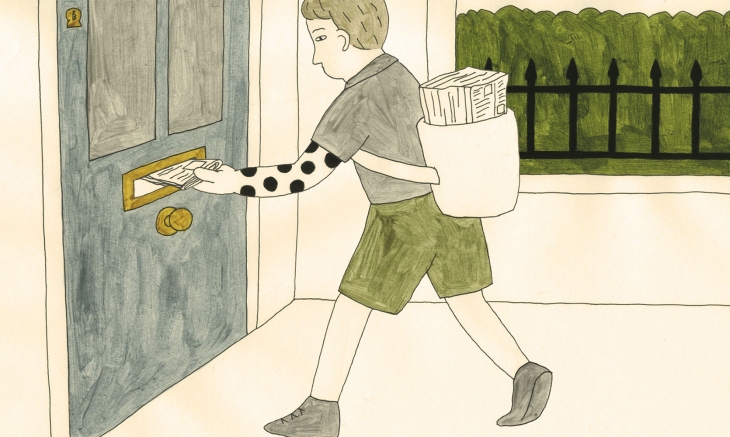
How did you develop the film? Did you write a script, and if so, what does a script for such an enigmatic film look like?
I don’t necessarily call it a script, but I write a lot of words and draw at the same time until I decide the whole structure of the story. The pages are all messy and chaotic, but I put down everything in my head, which is the most important process for me. I’ve shown some pages in the online talks I did during the quarantine, but I can’t show them here because they have spoilers.
You use pen, paint, and paper here, as you did in your previous films. Why do you like this technique? And what do you do with all the frames after the film is done?
I think I just like drawing on paper. And the texture of the hand-drawn technique can’t be imitated. Also it’s so satisfying to see tons of paper when the film is done, which is like a special reward that only hand-drawn animators can get after spending thousands of hours making it. I’ve kept every frame of my previous films. I think I might sell them or send them to my audience as giveaways someday.
Horret Kuus’s sound design is a key element in your films. How did you come to work with him? I know he’s worked with Priit Pärn…
Obviously I love Priit Pärn’s work and his animation had one of the biggest influences on my work. I knew the sound design had to be special when I was making my graduation film at the RCA. And I loved the sound design Horret did for Priit, so I contacted him explaining my passion for Estonian animation and his sound, and then fortunately he said yes. Since then I always work with him and I’m so grateful for that.
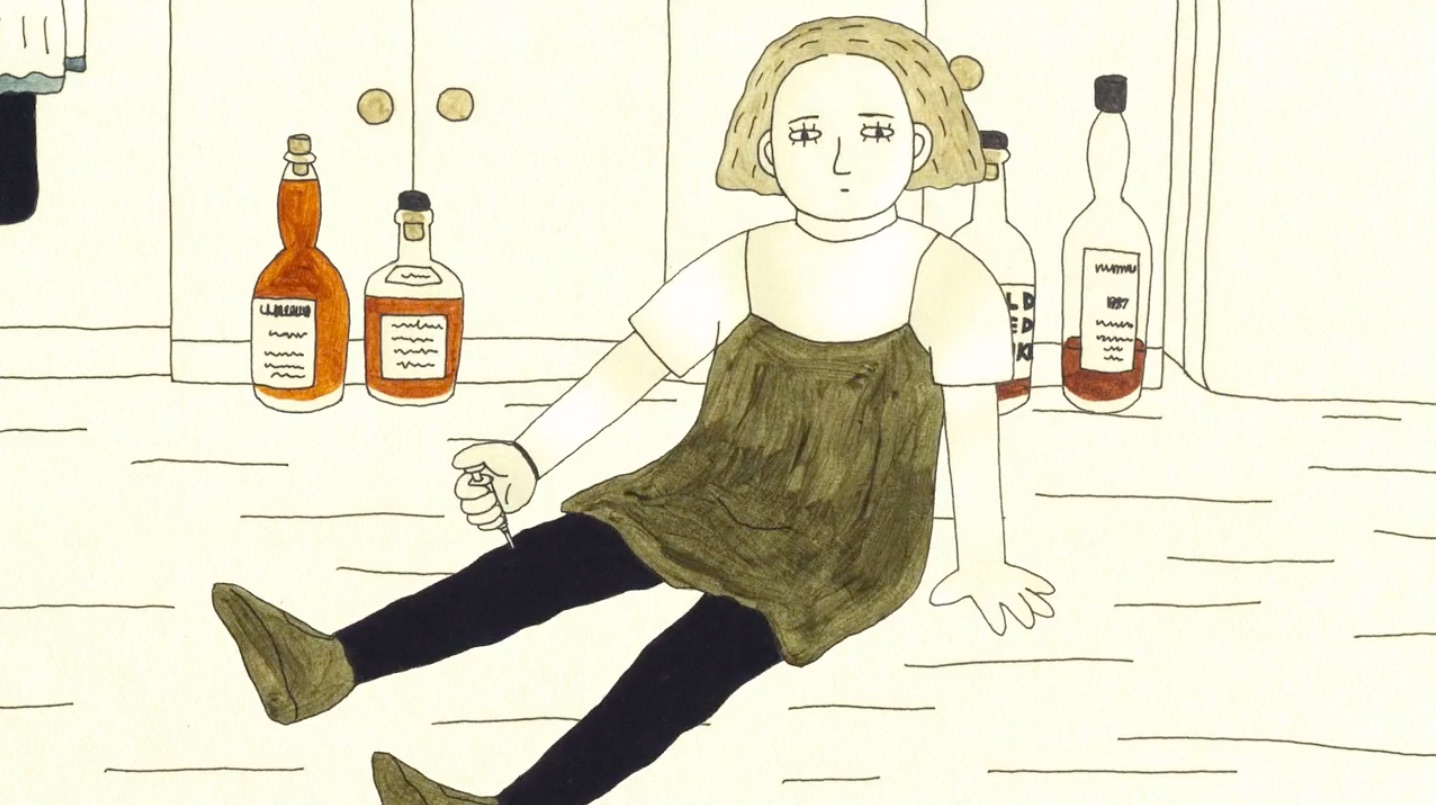
How do you two collaborate? At what stage does he start creating the soundtrack?
Usually I send the sound sheet to him when I finish animating or shift to the editing process. I have some specific sound ideas in some scenes, but it can be quite vague in most of the scenes. I try to explain the backgrounds of the characters and the atmosphere, and he understands exactly what I want, which sometimes transcends my expectations. That is the most exciting part of the production process.
For each of your films, you’ve worked with a different producer. To you, what makes a good producer?
To be honest, I haven’t really worked with producers from the early stage of the production process. I think I want to have control over everything when it comes to my stories. So my ideal producer would be a fan of mine.
Have you considered working with a Japanese producer?
No I haven’t. I think I’m not popular among Japanese people. But if there was someone who is Japanese and would consider producing my film, I would have a think about that.
Ottawa International Animation Festival runs online from September 23 to October 4. Tickets to individual programs cost CAD$9 and an ordinary festival pass costs CAD$60. For more information, head to the festival’s website.

.png)